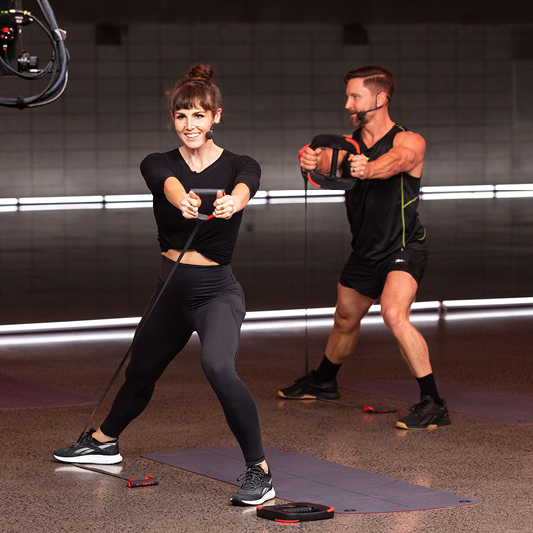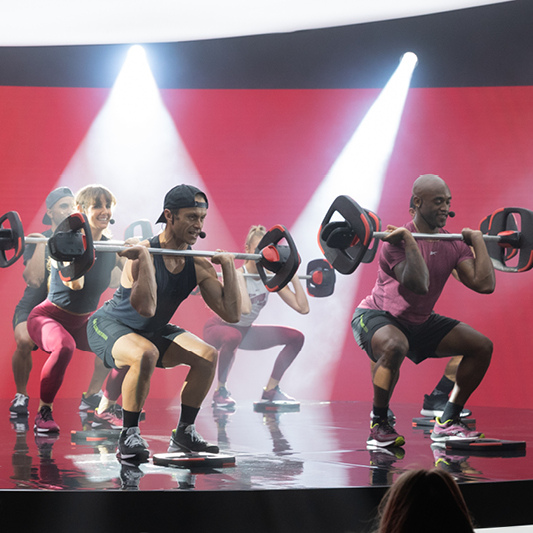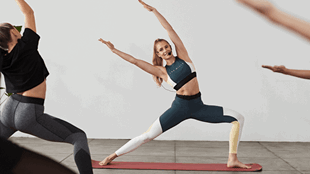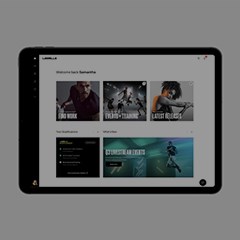It’s new release time again! That exciting few weeks of the quarter where we get brand new choreography, the latest music from the charts and inspirational coaching to keep our classes fresh and engaging.
One of the questions we most regularly see here in Instructor Land is: “How can I learn the new releases faster?” If you’re feeling the pressure right now, relax – we’ve got you covered with the following helpful tips:
1. Listen to the music until you’re sick of it
“I always start with the music,” says Matt Thraxton, Training Manager for Les Mills China. “I try to listen to the release as often as possible: in the shower, in the car, on the train, working out, making dinner, doing laundry. Certain lyrics, rhythms, patterns, instruments and musical landmarks will start to pop out for me. I know that the better I know the music, the more natural and relaxed I will feel when I teach. I usually listen to the release a few times in sequence to get a feel for the flow of that particular workout, and then I’ll have a playlist of each new release on shuffle to test my learning of the individual tracks.”
2. Break down the choreography into manageable chunks
Nadia Hassan (US), says: “I am a very visual learner, so when I get a new release, I print out the choreography notes and highlight every block of work that is similar. In BODYCOMBAT™, it's the A, B, C, etc. In BODYPUMP™, I highlight the blocks of work 1, 2, 3, that are similar in the same colors. This way, when I'm teaching, I can visually see the colors. I know that in the Back Track there are two green sets before two blue sets.”
“I print off the choreography notes and use highlighter pens to color code blocks of work and patterns,” adds Thraxton. “This makes learning the choreography quicker, easier and helps cement the learning so it becomes second nature when I then begin to teach. I also scribble lots of hints and tips and notes on the page such as musical landmarks, tricky transitions, coaching points, time codes: anything that helps my learning and gives me the ability to highlight unique points of difference in this release. This practise also gives me a great review document for when I go back to teaching these tracks later down the line.”

3. Use the “presenter voice off” tool on the Masterclass
“I have a ‘pressure practice’ idea,” says UK Trainer Justin Riley. “I play the Masterclass footage with Presenter voice off and pretend to teach the track to members. I’ll move with the music and coach out loud whilst also dealing with external distractions like the dog, the TV in the background, or even answering a question from someone in the house. This helps me to determine how well I truly know the track. If I stay on track with all this happening at once then I’ve got it!
“In a live class situation there are always distractions or moments of impromptu connection that will take your attention from purely teaching the choreography,” Justin continues. “If I lose my way I’ll check the Masterclass footage and get back on track. I’ll then re-do the same practice of that track and correct the part that threw me. This is to add an extra level of realism to practicing at home. It’s very easy to focus on just the music and moves, which can give you a false sense of security that you’ve truly learnt it well enough to teach and deal with distractions.”
4. Write the choreography down
“For years I solely watched the Masterclass to learn a release,” says US-based Sarah Chermely. “It would take weeks because I’d get distracted by the clothes, lights or cues from the Presenters. One day I tried something different and it’s been a major time saver!
“First, I listen to the music as much as I can (while cleaning, driving, lifting weights), then watch the Masterclass while writing down choreography. The simple act of writing the choreography down cements it in my brain. Since I have usually listened to the music beforehand, I know the highs and lows, which brings the whole release together much quicker! Now, I can learn BODYPUMP™ in 2 to 3 hours total, LES MILLS SPRINT™ in 30 min and BODYSTEP™ will take about 4 to 6 hours."

5. Physically practice the movements
Mathilda Björck, Les Mills Nordic, explains: “I always watch the Masterclass first to get a feel for the release, see the moves and hear the coaching. Then I listen to the music and do the moves, practicing them physically to get them in my body. I read the Track Focus to understand the tracks and I use the choreography notes when I practice. When I have this routine, the coaching comes naturally and it’s so much easier to prepare.”
“Practice in front of the mirror so you can role model the Masterclass presentation,” suggests Pedro Zhai from China. “The aim is to create muscle memory of the movements so that demonstrating correct technique in class comes naturally.”
Did you this article helpful? Let us know at instructor@lesmills.com, and tell us about other topics you’d like to hear about!








